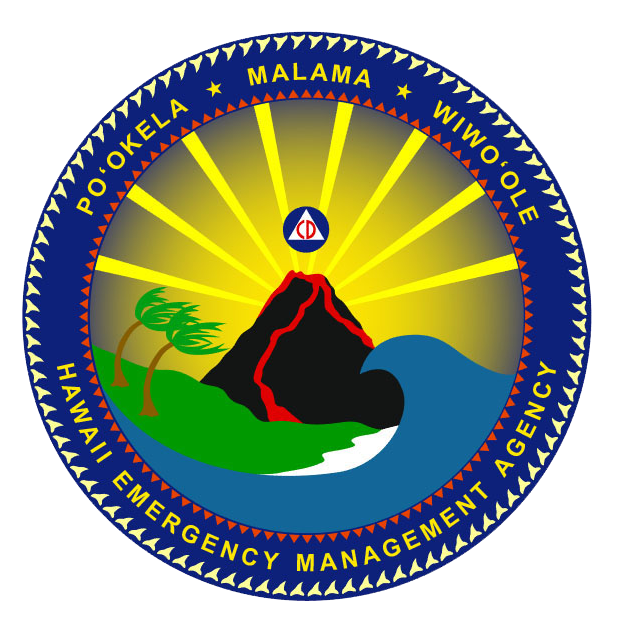From the Hawaii Department of Health: Q&A on Brown Water Advisories, Beach Safety, and Water Sampling during the Kauai Flood Response
Posted on Apr 22, 2018 in MainApril 22, 2018
What is the Department of Health’s Clean Water Branch (CWB) doing during the flood response to evaluate the safety of Kauai’s beaches?
First, and most importantly, DOH issues Brown Water and Flood Advisories to alert residents, visitors, and response personnel to take precautions to avoid exposure to flood waters affecting local beaches and across the island.
During BWAs, DOH focuses on identifying clean beaches to guide people to safe places to enjoy the water. Water quality testing is not necessary at locations with visible brown water conditions due to the known hazards present under these conditions. However, as local waters become visibly clear, CWB resumes routine bacteria sampling to determine when water quality meets the required federal threshold for safe re-use. Test results are available after 24 hours. The advisories are posted or removed shortly after the CWB receives the results from the laboratory.
As a result of testing, brown water advisories were lifted from Keoniloa Bay to Sheraton Beach on Tuesday, 4/16. Sampling at remaining Kauai public beaches with county life guard stations resumes 4/23 as waters become visibly clear. Updates to the BWA will be announced and warning signs will be posted at any locations where test results indicate continuing bacteria hazards.
What are Brown Water Advisories and why does DOH use them?
A brown water advisory (BWA) is issued to advise beach users to use caution when waters are brown, turbid, or cloudy as these waters may contain land-based polluted runoff. A BWA is generally issued by the CWB when the National Weather Service issues a Flash Flood Warning or when CWB field personnel receives information or observes conditions consistent with a brown water event. Heavy rain may cause excessive runoff of water carrying land-based pollution that eventually flows into the ocean via beaches. However, rain need not occur on the beaches; rain in the mountains may cause runoff to impact a beach through streams, storm drains or drainage canals even on a sunny day at the beach. Other events such as water main breaks may also cause land based pollutants to be washed into beaches and streams.
Are the waters always brown during a Brown Water Advisory?
No. Waters need not be brown during a BWA; runoff from rocky areas with little soil may not be brown in color, but are often turbid or cloudy. Sewage overflows may be gray or even colorless, but are often turbid or cloudy. The color of the water during a BWA may depend on the color of the soil in the surrounding area or may take on the color of land based pollutants.
When does DOH post signs or require others to post signs at beaches or waterways?
DOH posts warning signs at beaches whenever beach monitoring sampling confirms indicator bacteria testing exceeds the federal threshold of 130 enterocci per 100 ml of water, until confirmation samples show the water quality has returned to safe levels.
When a sewage spill occurs, DOH requires the responsible party to immediately post warning signs, contain the spill to the extent possible and conduct water testing until samples show that water quality has returned to safe levels.
How does this apply to standing flood waters inland?
The same hazards and precautions apply to standing flood waters in inundated communities inland. While containment of sewer system spills is an important priority, pumping and removing standing water in flooded areas may not be effective due to continuing groundwater input from the saturated ground.
Why doesn’t DOH post beaches or standing water inland during BWAs?
Because BWAs come quickly and may affect large areas, it is not feasible or practicable to send staff out to post signs at all affected locations. Instead, DOH uses press releases, public messaging, its opt-in notification system and the online web interface to rapidly notify the public about potential hazards from predicted or ongoing brown water and flooding events.
Who has authority to close public beaches?
DOH does not have regulatory authority to close public beaches. This authority lies with the public property owners, including Counties and DLNR, as well as other state and federal agencies.
Where can I learn more about water quality where I live?
All current advisories, a description of the Beach Monitoring Program and a detailed Q&A are available on line at https://eha-cloud.doh.hawaii.gov/cwb/#!/landing. You can sign up for the water quality alert system here too.
How does DOH Clean Water Branch monitor beach water quality safety?
Under the federally funded Beach Program, DOH implements a water monitoring at over 400 public beaches statewide, and provides public notification whenever indicator bacteria levels exceed a specified threshold of 130 enterococci per 100 ml water.
Where does routine sampling take place on Kauai?
In accordance with the BEACH Act, CWB routinely monitors 40 beaches on Kauai. 11 beaches are monitored weekly – these include all beaches with county life guards and the 10 Tier 1 beaches: Ke’e Beach Park, Haena Beach Park, Hanalei Beach Park, Waiole Beach Park, Anahola Beach Park, Kealia Beach Park, McArthur Beach Park,,Po’ipu Beach, Salt Pond Beach Park, Kalapaki Beach Park and Lyndgate Beach Park.
Does the CWB collect water quality samples during a Brown Water Advisory?
No. To protect public health, CWB issues BWAs as soon as conditions can be verified and suspends routine sampling in those areas until the water appears clear. Stormwater runoff may include water from overflowing cesspools, sewers, and manholes; pesticides; animal fecal matter; dead animals; pathogens; chemicals; and associated flood debris. From past experience, the CWB can be fairly certain that the indicator bacteria will exceed the allowable threshold level during BWAs.
-end-
